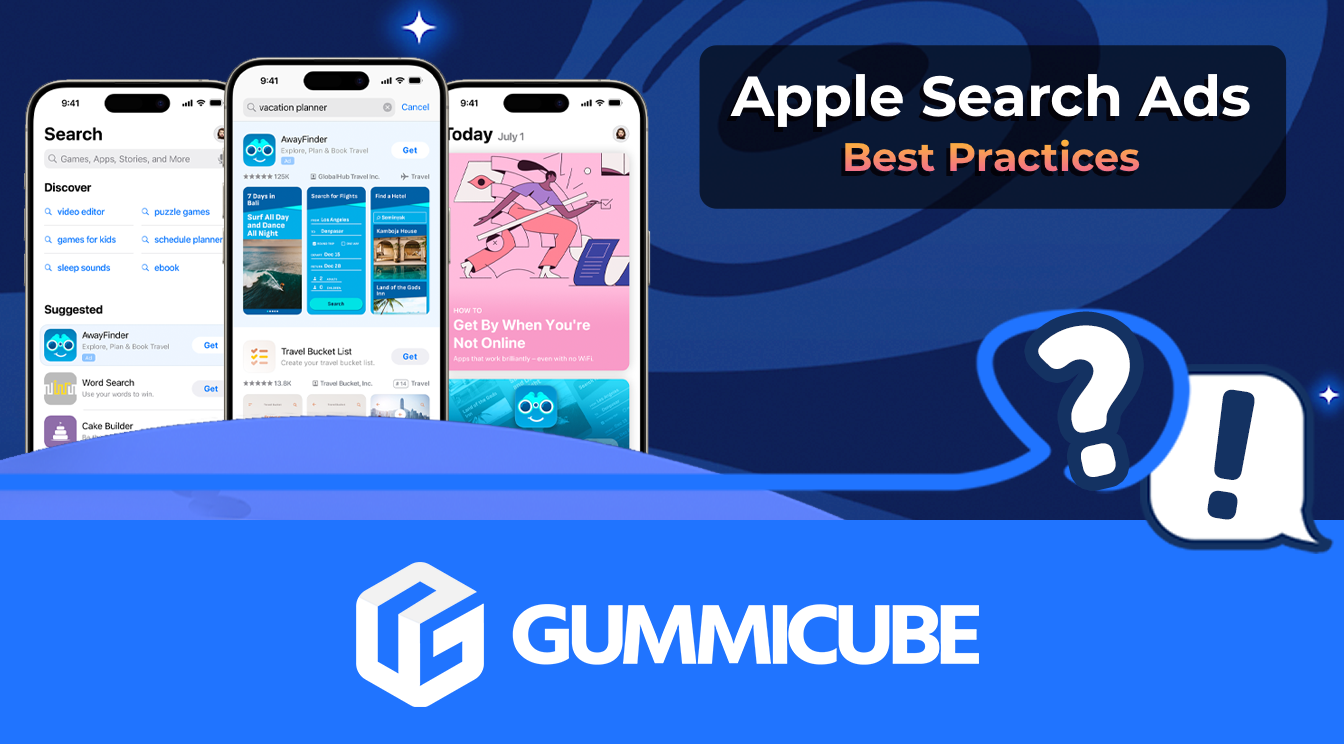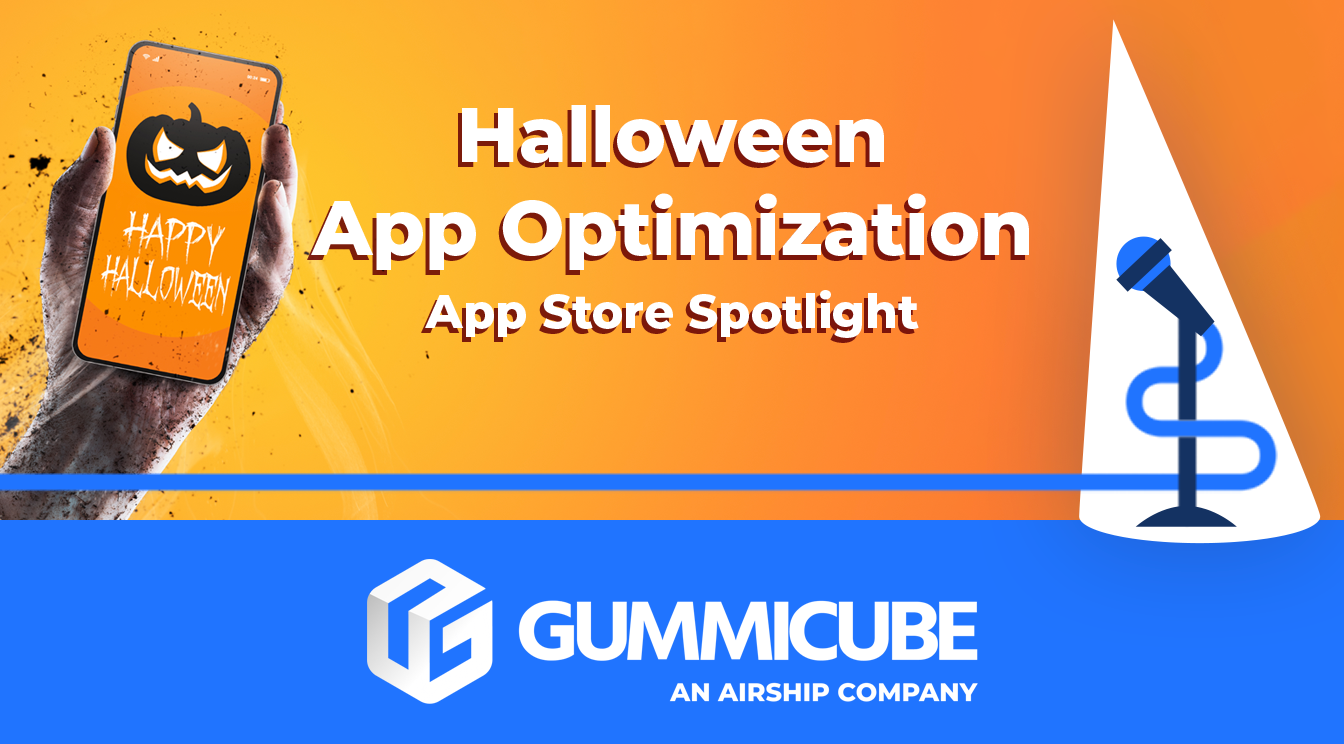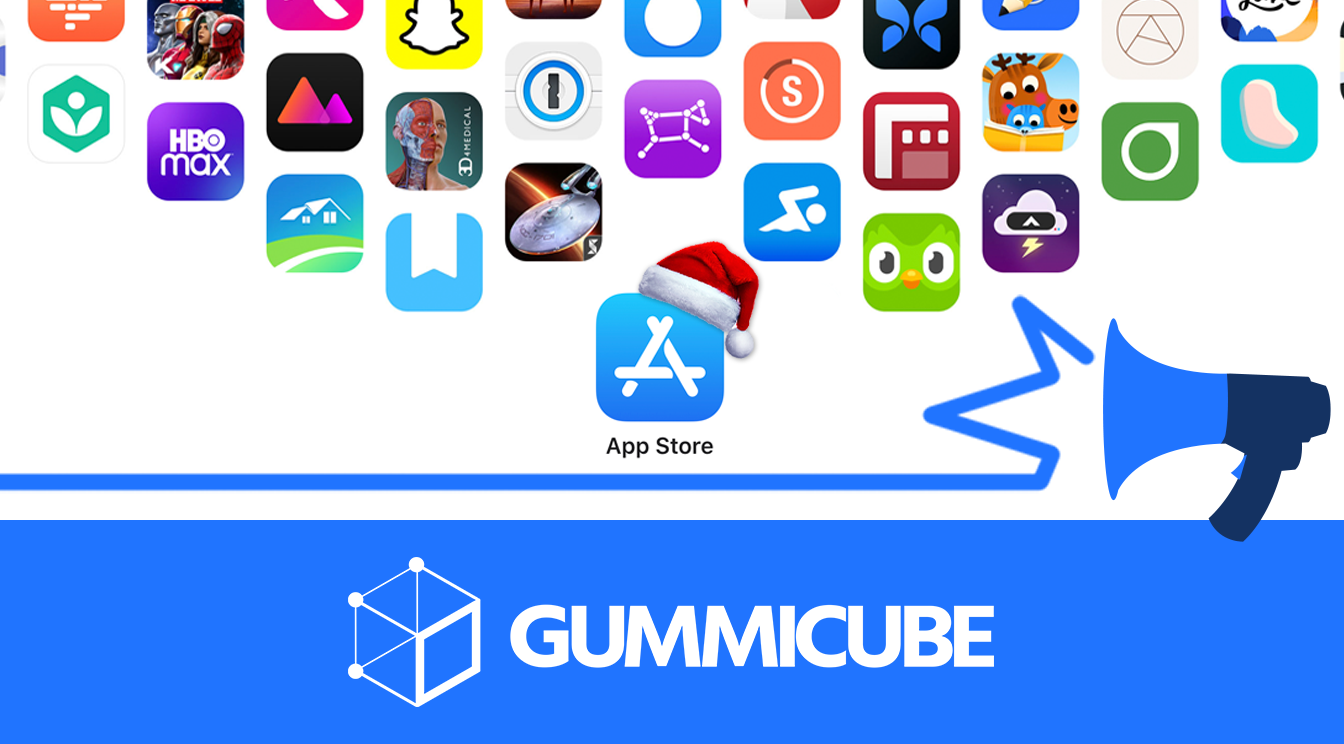
5 Best Practices for Apple Search Ads
Posted on July 3rd, 2024
Are you leveraging Apple Search Ads the right way? Take a look at these recommendations to optimize your paid campaigns and target the right users.

Many app developers know one of the best ways to make their app more visible is through their ASO strategy. However, just because a developer creates a strategy doesn’t mean that they’ll always do it correctly and achieve the results they want. While there’s still no perfect way to do ASO, there are tips and best practices that help developers succeed.
When developers come up with an idea for an app, they should have who they want using their app in mind. Unfortunately, developers fail to target them appropriately because they may fail to narrow demographics such as: age, gender, location, etc. If they don’t pay attention to these vital points, they won’t create their ASO and marketing strategy around their target audience. It’s important to factor in user trends and behaviors in relation to an app’s features to help establish the audience. An easy example is a personal finance app- developers would want more users between 18-55+ as opposed to users between 13-17. By knowing exactly who they want to target, developers can in turn work on setting up a strategy geared toward those users and how they search. For both organics and paid marketing, keywords must be researched that are relevant to this feature, while creatives should reflect the feature-based keywords being targeted.
Keywords are incredibly important for helping apps become visible in the app stores. Optimizing what terms and phrases to target is a necessary part of any ASO strategy. The information that developers gather from determining their audience will also help them think of what kinds of keywords to target. Researching, deploying and tracking keyword movement with ASO software is an important step in further optimizing. Developers should also incorporate the keywords they determine throughout their creatives, so they can improve conversion on these terms. That means the keyword being used in the call to action (CTA) to help improve click-through rates, which can help the app rank higher for the term.
Creatives, such as the icon, screenshots, and preview video can either encourage or deter users from converting. The screenshots and preview video should be treated as a banner for the app that highlights its core features. If the screenshots or preview video are confusing, users won’t understand the app’s features or how they can use it. For the video especially, a well-done one can increase conversion up to 25%. However, a poorly done video can decrease conversion. Because creatives are such a make or break situation, it’s important that developers also utilize A/B testing to ensure that they’re achieving the highest performance from their creatives. By conducting an A/B test of screenshot sets, developers can learn key values regarding orientation (portrait vs landscape), color schemes, in-app imagery, and more.
Developers always need to take extra precautions to make sure that their app is appearing to users, especially within the target audience. By incorporating a paid campaign such as Google Ads, Apple Search Ads, or Facebook Ads, developers can:
If developers take the time to learn about the various types of paid campaigns and take advantage of them, they’re sure to expand their audience. Additionally, they’re more likely to get a better return on investment (ROI).
Keyword optimization is a critical first step in organic discoverability. However, developers that utilize keyword stuffing as a way to boost their keywords tend to fail. For starters, it is a tactic that is highly frowned upon and actually against guidelines in the app stores. Also, if the developers stuff keywords, particularly in the Google Play description, it may actually get flagged and hurt indexation. Developers that incorporate their keywords throughout their app’s metadata in advantageous yet compliant ways typically achieve more long-term success. Some developers try to use Black Hat ASO practices such as stealing other app’s brands, names, creatives, or branded keyword traffic. Others also try running burst install campaigns from poor quality traffic sources in order to falsely inflate category rankings. Users acquired through these tactics are usually not engaged, rarely make purchases and contribute to high uninstall rates- a metric that Google takes into account for your Google Play ASO rankings. This route can also be expensive, difficult to maintain and only last as long as the campaign is run. When Apple or Google realize these practices are being used, they can flag the developer’s account, possibly resulting in removal the app or having the developer’s account banned altogether. It’s both smarter and safer for developers to avoid keyword stuffing and Black Hat practices to ensure long-term growth from high quality users.
The journey of success is a long process that includes making changes when necessary. These changes can include targeting new keywords, updating creatives, and more. Developers that create an ASO strategy and do it properly will succeed. Additionally, they’ll stay ahead of their competition and make sure that their success wasn’t a one-time fluke. Want more information regarding App Store Optimization? Contact Gummicube and we’ll help get your strategy started.

Are you leveraging Apple Search Ads the right way? Take a look at these recommendations to optimize your paid campaigns and target the right users.

Ghostly happenings are among us... and in your app listing too? If you aren't leveraging the power of app seasonality to make relevant tweaks to your store listing you're leaving precious engagement and conversions on the table.

Developers on the iOS App Store should plan in advance of the upcoming Holiday Schedule to allow enough time for apps to get approved during the busy holidays.